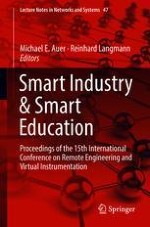The REV conference aims to discuss the fundamentals, applications and experiences in remote engineering, virtual instrumentation and related new technologies, as well as new concepts for education on these topics, including emerging technologies in learning, MOOCs & MOOLs, Open Resources, and STEM pre-university education.
In the last 10 years, remote solutions based on Internet technology have been increasingly deployed in numerous areas of research, science, industry, medicine and education. With the new focus on cyber-physical systems, Industry 4.0, Internet of Things and the digital transformation in industry, economy and education, the core topics of the REV conference have become indispensable elements of a future digitized society.
REV 2018, which was held at the University of Applied Sciences in Duesseldorf from 21–23 March 2018, addressed these topics as well as state-of-the-art and future trends.
